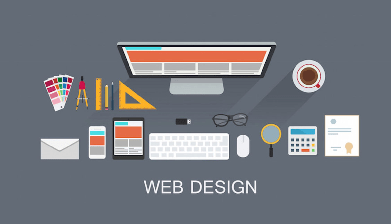The intersection of SEO (Search Engine Optimization) and web design is a critical aspect of creating a successful and user-friendly website that ranks well in search engines. The way a website is designed can significantly impact its visibility in search results, user experience, and overall online performance. Here are key points to consider at the intersection of SEO and web design:
- Mobile-Friendly Design: With the prevalence of mobile devices, having a responsive and mobile-friendly design is essential. Google considers mobile-friendliness as a ranking factor, and a mobile-friendly site ensures a positive user experience on all devices.
- Page Speed: Website speed is a crucial factor for both user experience and SEO. Slow-loading pages can lead to higher bounce rates and lower search rankings. Web design should prioritize optimizing images, minimizing code, and utilizing browser caching to enhance page speed.
- User Experience (UX): A well-designed website should prioritize user experience. Intuitive navigation, clear layout, easy-to-read fonts, and organized content contribute to a positive user experience, reducing bounce rates and improving SEO.
- Site Structure: A well-organized site structure makes it easier for both users and search engines to navigate your website. A clear hierarchy and logical linking structure help search engines understand the importance of various pages and how they relate to each other.
- URL Structure: Creating clean and descriptive URLs helps search engines and users understand the content of a page at a glance. URLs should reflect the content hierarchy and include relevant keywords.
- SEO-Friendly Design Elements: Design elements such as images, videos, and multimedia should be optimized for search engines. This includes using descriptive alt text for images and providing video transcripts to make content accessible to search engines.
- Content Placement: Strategic placement of high-quality content is important for both users and SEO. Essential information should be placed prominently, and relevant keywords should be used in headings and body contentEnsure search engine bots can easily crawl and index your website. This involves having a clear link structure, avoiding complex JavaScript that might hinder crawling, and utilizing tools like XML sitemaps.
- Schema Markup: Incorporating schema markup can provide search engines with additional information about your content, improving the chances of rich snippets appearing in search results and enhancing click-through rates. Flash-based designs can be problematic for SEO as they’re not easily accessible to search engines. Using modern web technologies like HTML5 and CSS3 is more SEO-friendly.
- Avoid Duplicate Content: Proper design practices can help avoid duplicate content issues that might arise from multiple URLs displaying the same content. Canonical tags and consistent URL structures can mitigate this problem.For businesses targeting local audiences, including local contact information, business hours, and maps can improve local search visibility.

Leave a Reply